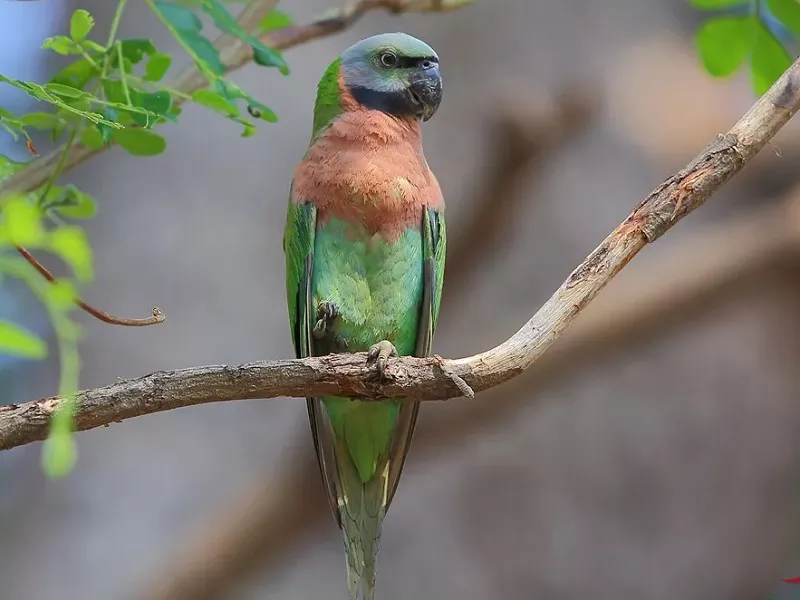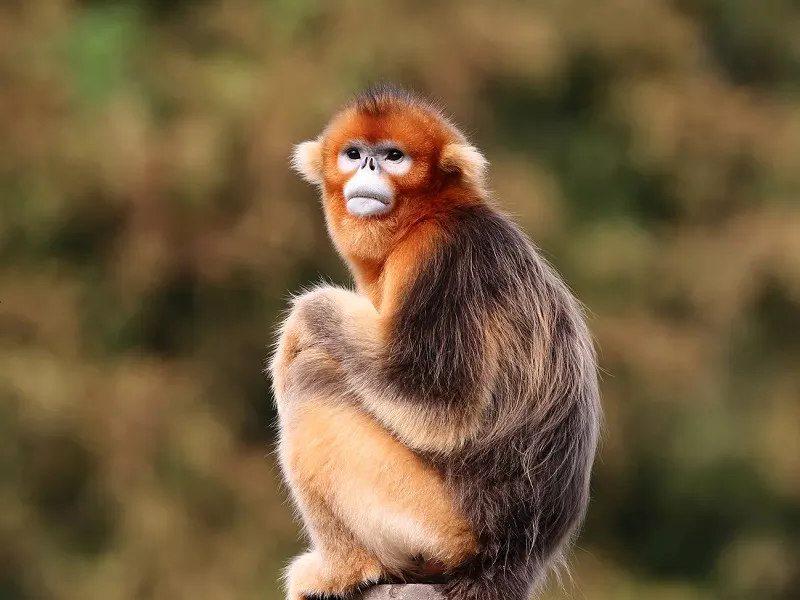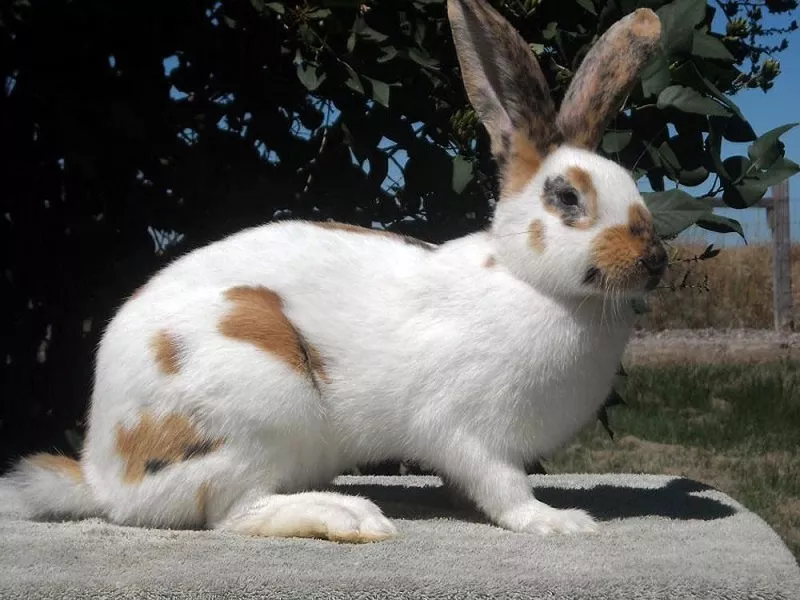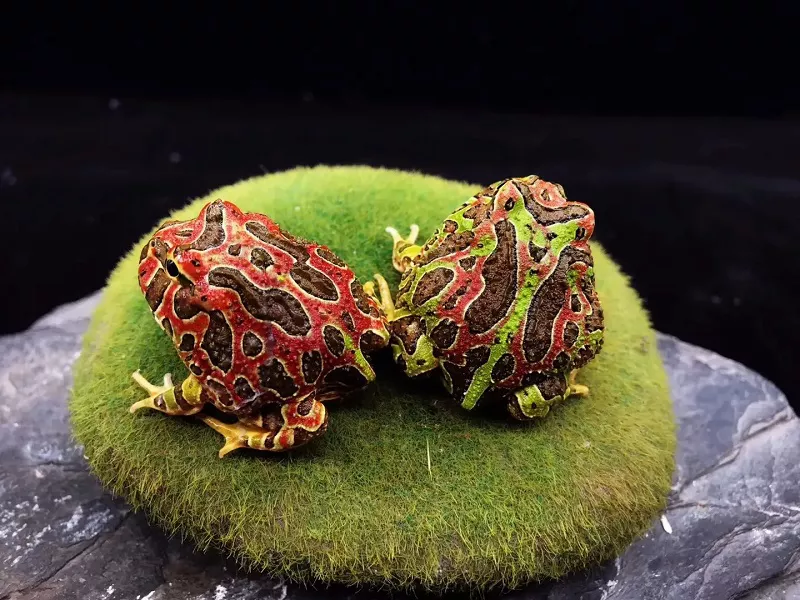What is a rose breasted parakeet?
Rose breasted parakeets are medium-sized birds with 8 subspecies. Body length 26-36 cm. It is a typical climbing bird with a strong and powerful beak, hooked and curved beak, movable joints in the upper jaw, and wax membrane at the base of the beak. Muscular tongue thick. The feet are short, strong, and flat-toed, with two toes forward and two backwards, suitable for grasping and climbing life. The head is grape-grey, with green around the eyes and a narrow black band on the forehead extending to the eyes. Upper body green, chin white, throat and chest grape red or brick red.
Mainly inhabits the forest belt at the foothills where the sea level is not high, living in groups, diurnal, inhabiting trees in mixed groups with myna and crows at night, and resident birds. Arboreal, good at climbing, using mouth and feet together, flying in a straight line, likes to chirp, loud and harsh voice, and can imitate human speech after training. Feeds on nuts, berries, sprouts, grains, seeds, etc. Distributed in Indochina Peninsula countries to central Malaysia, including northern India, Nepal, Myanmar, Guangxi, Guangdong and Hainan Island in China, Thailand, Vietnam, Cambodia, southern Borneo and Java Islands in Indonesia.
Rose breasted parakeet morphological characteristics
The male crimson-breasted parrot has a black band on the forehead, extending back along the sides to the eyes. There is a black wide-banded spot on each side of the base of the lower mouth, extending backward and obliquely to the side of the neck, the first and around the eyes are stained with green, and the rest of the head is purple-gray. The back of the neck and the sides of the neck are glowing green, the back, shoulders, inner coverts and inner flight feathers are bronze, with metallic green luster, and the feather ends have dark beetle-like spots. The outer middle and large coverts are golden green, and the feather tip also has dark beetle-like spots. The first flight feather is dark brown with a narrow edge of khaki, the rest of the flight feathers are dry black brown, the outer ring and the tip of the feather are green and have a narrow golden yellow edge, and the inner ring is dark brown and the edge is khaki. The tail feathers are narrow and pointed. The two central tail feathers are particularly narrow and blue, the base feathers are green, and the tail feathers on both sides are shorter toward the outside. Chin stained white, throat and chest red with purple-grey. The rest of the lower body and underwing coverts are green, and the belly feathers are stained with purple-blue.
Females have blue-gray heads, orange-red throats and breasts, lacking purplish-gray contamination, and generally shorter central tail feathers than males. The young bird’s head is grape-brown, with a purple-grey forehead, and gradually turns green below the top of the head. The underparts turn green, the throat and breast are slightly tinged with purple, and the central tail feathers are short.
The iris is yellow (♂) or yellow-white (♀). The upper beak of the male bird is mostly coral red, and the apex is ivory. Female beak dark brown, feet dark yellow green or slate yellow.
Size measurement: body weight ♂110-168g, ♀85-160g; body length ♂263-362mm, ♀220-338mm; mouth peak ♂23-27mm, ♀21-26mm; wings ♂142-167mm , ♀141-163 mm; tail ♂98-220 mm, ♀92-192 mm; tarsal ♂13-21 mm, ♀13-21 mm. (Note: ♂ male; ♀ female)
Rose breasted parakeet habitat
Mainly inhabits the forest belt at the foothills where the sea level is not high, living in groups, diurnal, inhabiting trees in mixed groups with myna and crows at night, and resident birds. Arboreal, good at climbing, using mouth and feet together, flying in a straight line, likes to chirp, loud and harsh voice, and can imitate human speech after training. Feeds on nuts, berries, sprouts, grains, seeds, etc. Distributed from Indochina Peninsula countries to central Malaysia, including northern India, Nepal, Myanmar, China, Thailand, Vietnam, Cambodia, southern Borneo and the Java Islands in Indonesia.
The Habits of the Rose breasted parakeet
Often more than a dozen to dozens of them move in groups, are good at climbing, and can use both mouth and feet to climb, and they are very dexterous when climbing up and down. Fly fast and often in a straight line. Usually they will form groups of about 10 to 50 roaming activities. Most of them are seen flying low in the woods or heading to rural areas. When they reach their destination, they will perch on tall branches. It is quite noisy when flying. It is very quiet only when foraging; it has the habit of migration, and the location of migration is completely determined by the availability of food. Occasionally, it will gather together with grey-headed parrots in the same genus to go to the rice fields for food, and they fly faster than all the other species in the same genus. The parrots are slow, loud and loud. Sometimes they live in groups with crows and starlings. Perched on trees at night. It is docile in nature, easy to raise, and can imitate human language after training. At night, it often mixes with myna and crows in the trees. Food is mainly berries, nuts and other fruits of wild plants, as well as seeds, nectar, twigs and young shoots, etc., also eat grains and insects.
Breeding of rose breasted parakeets
Breeding seasons vary from place to place depending on latitude and climate. The breeding season in India, Myanmar, and the Andaman Islands is from December to April; in Java, it can breed throughout the year except April. In China, from March to May every year, they will build their nests in hollow tree trunks or dead tree holes. The nests used by woodpeckers and toucans are also ideal places for their nesting; usually nest in groups of 1000 meters. In the evergreen broad-leaved forests in the lower mountains and foothill plains below, the nests are mostly built in natural tree holes ranging from 1.5 to 15 meters above the ground. Each clutch lays 3-4 eggs, which are white in color and about 30 x 25 mm in size. Incubation is undertaken by the female bird, and the incubation period is 28 days. The chicklets of the red-breasted parrot are late bloomers and can fly after about 50 days of parenting.


























